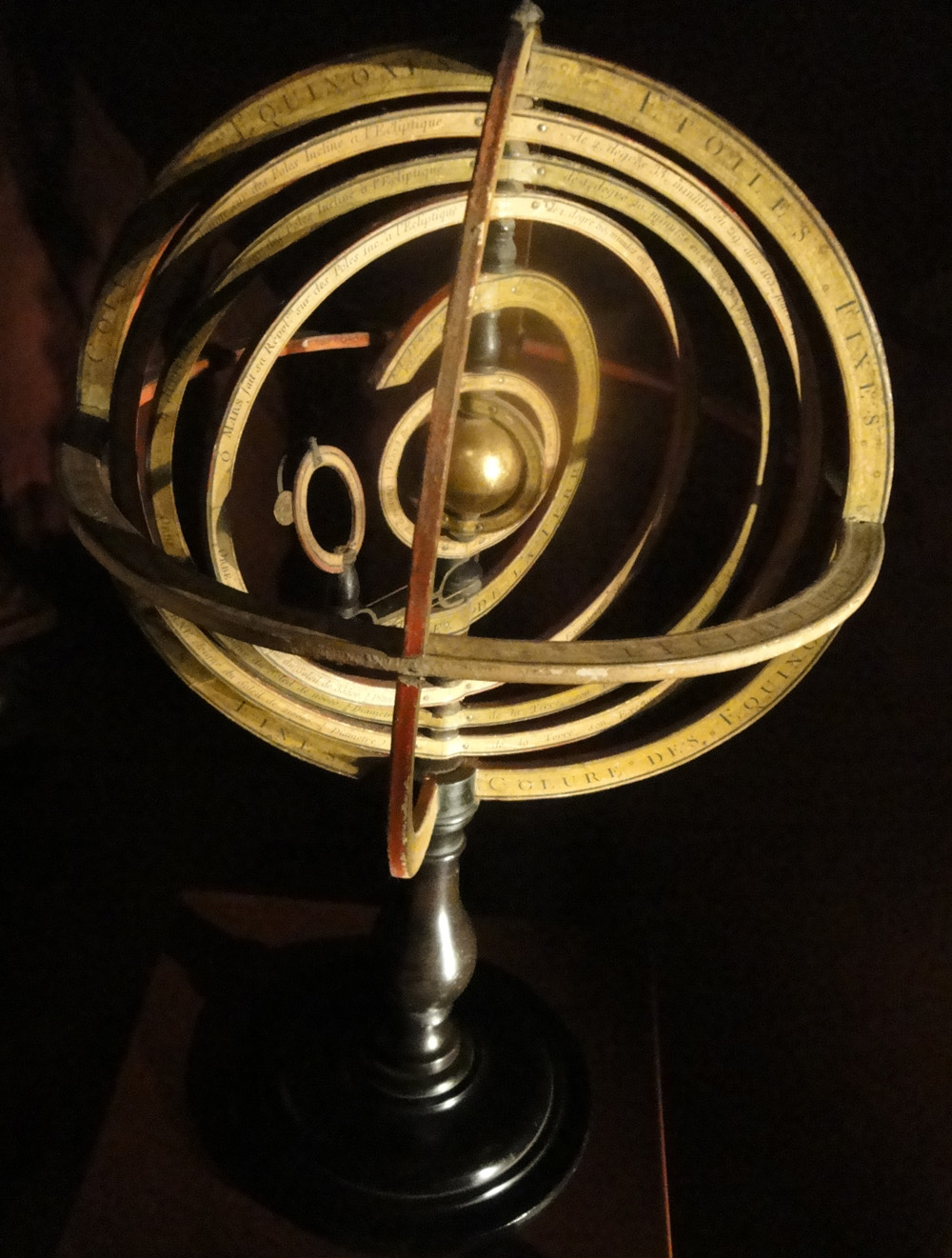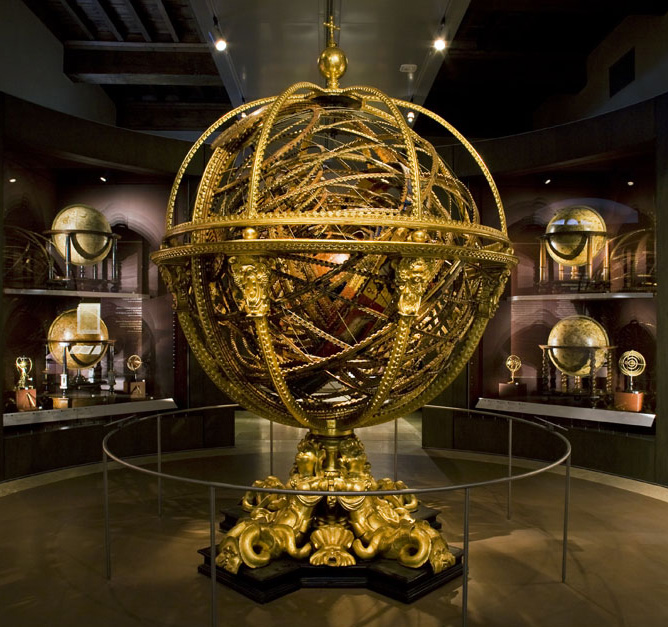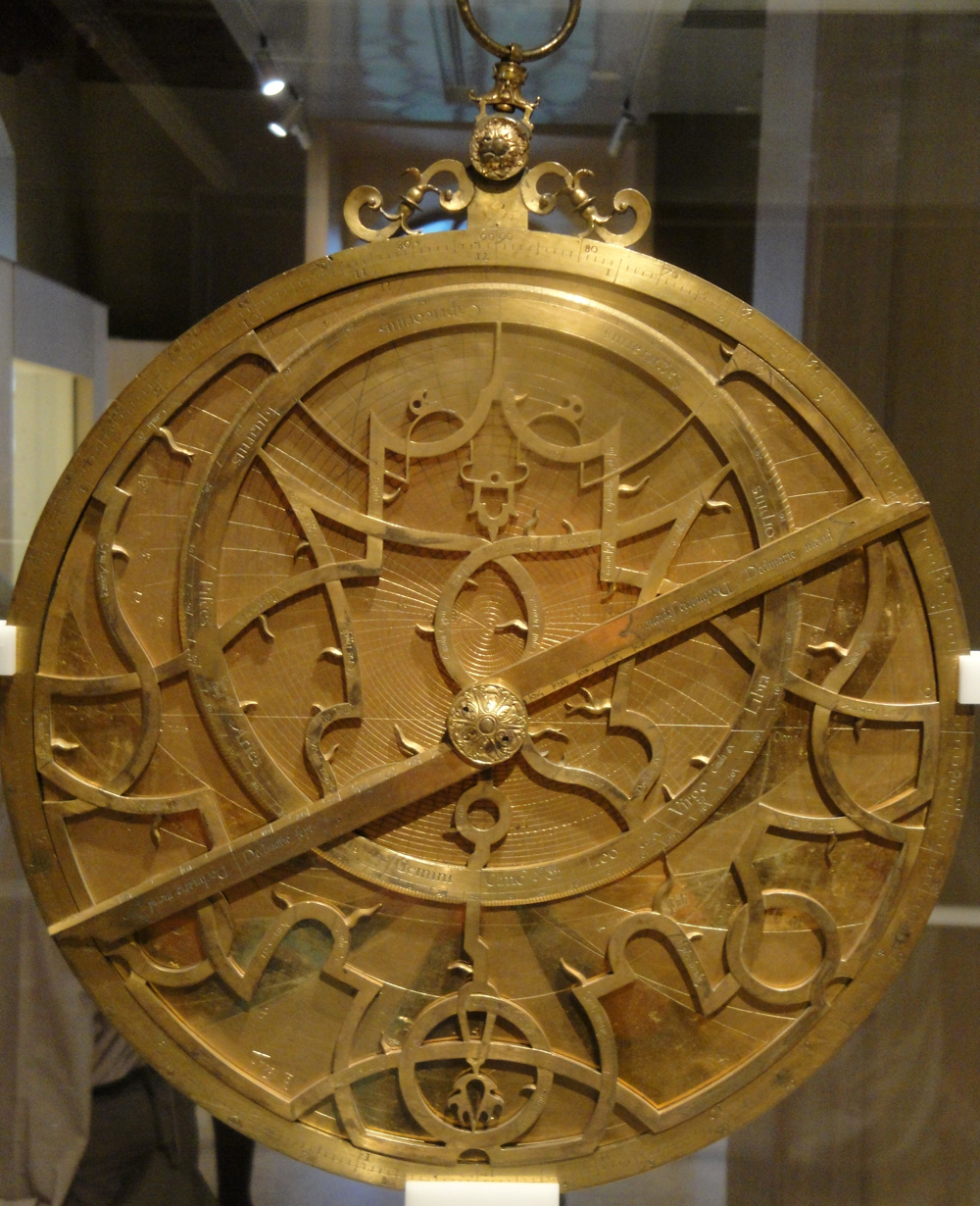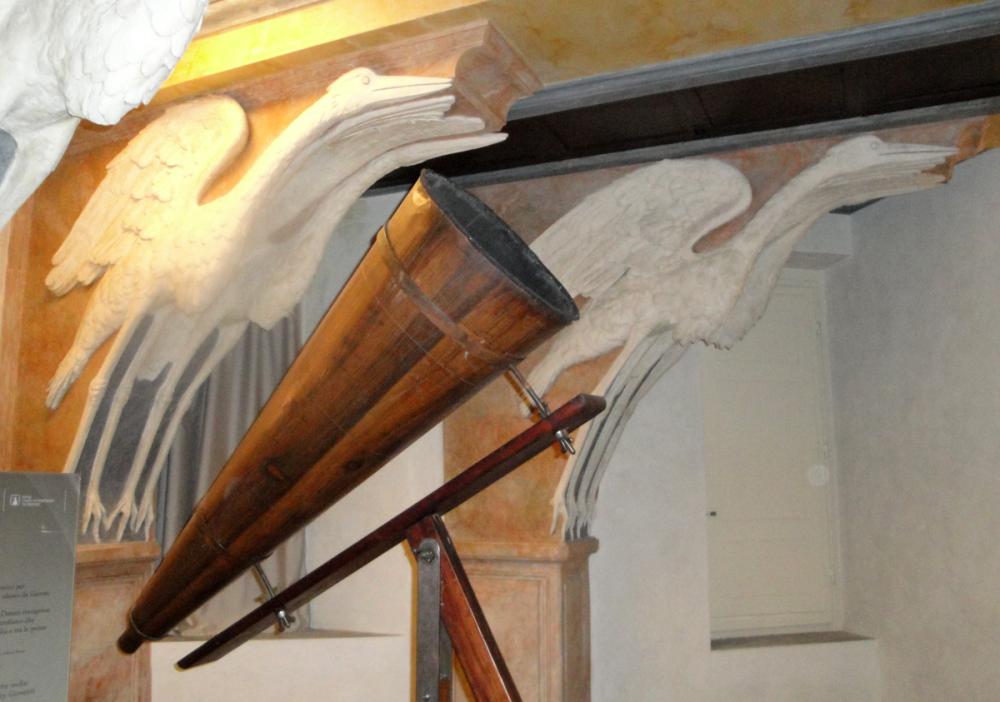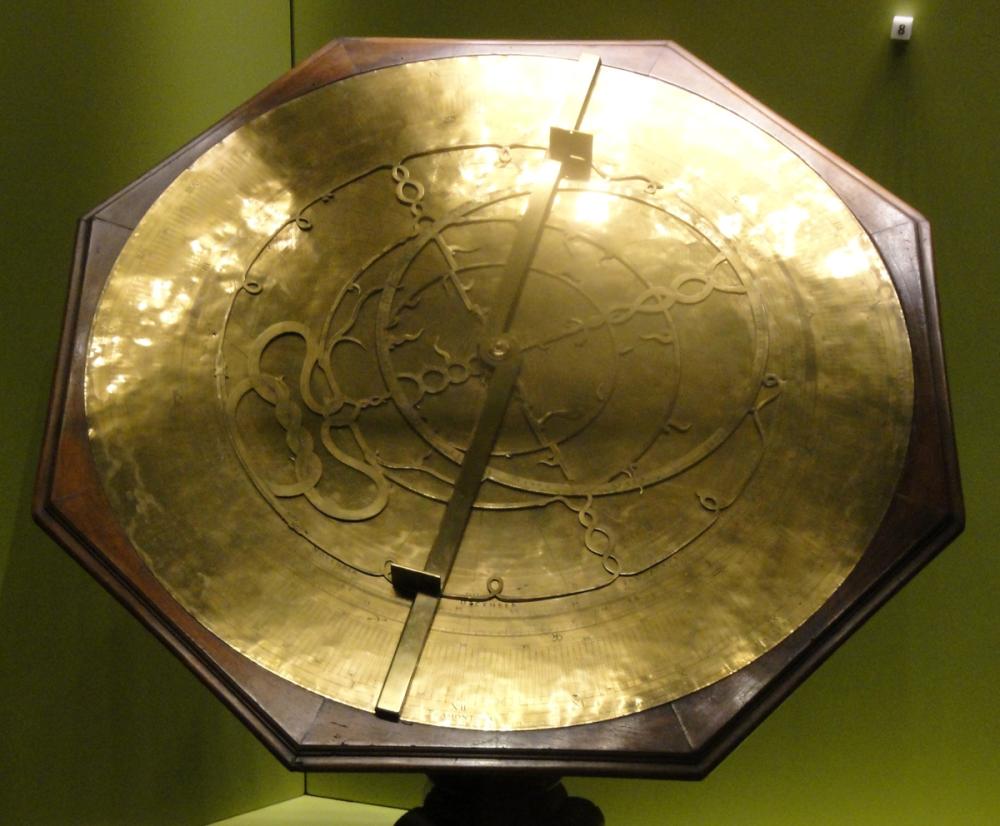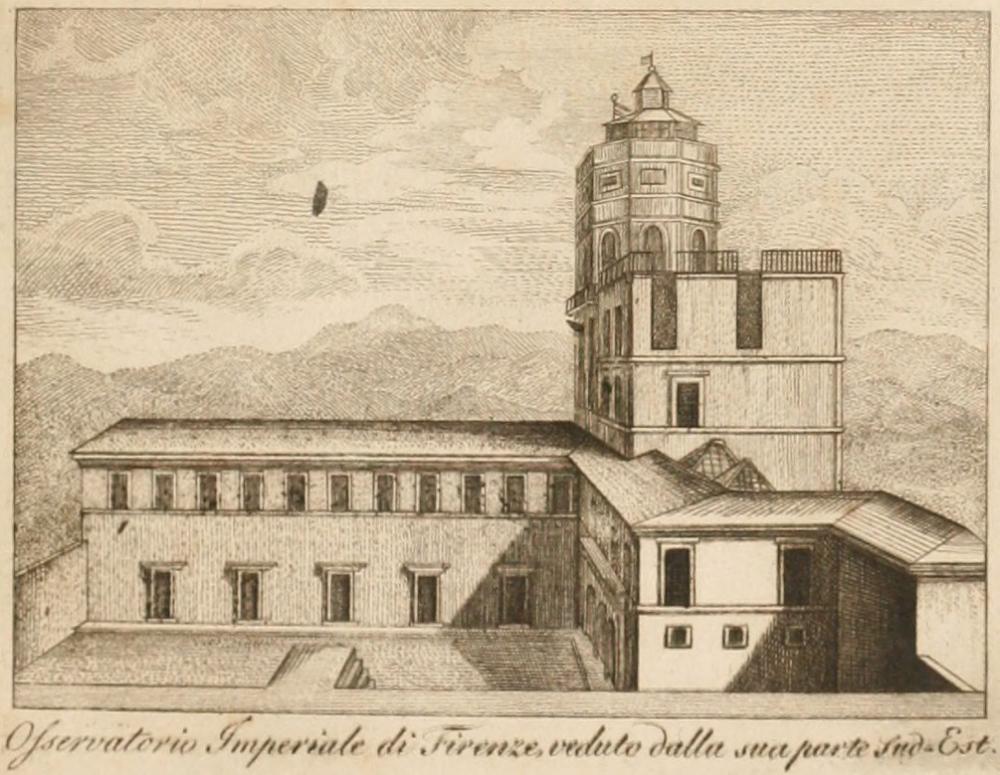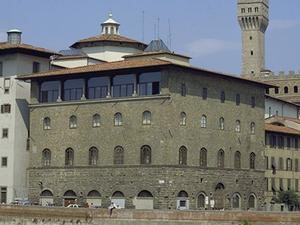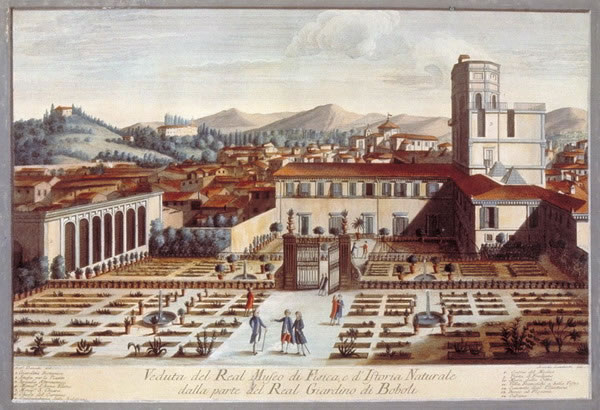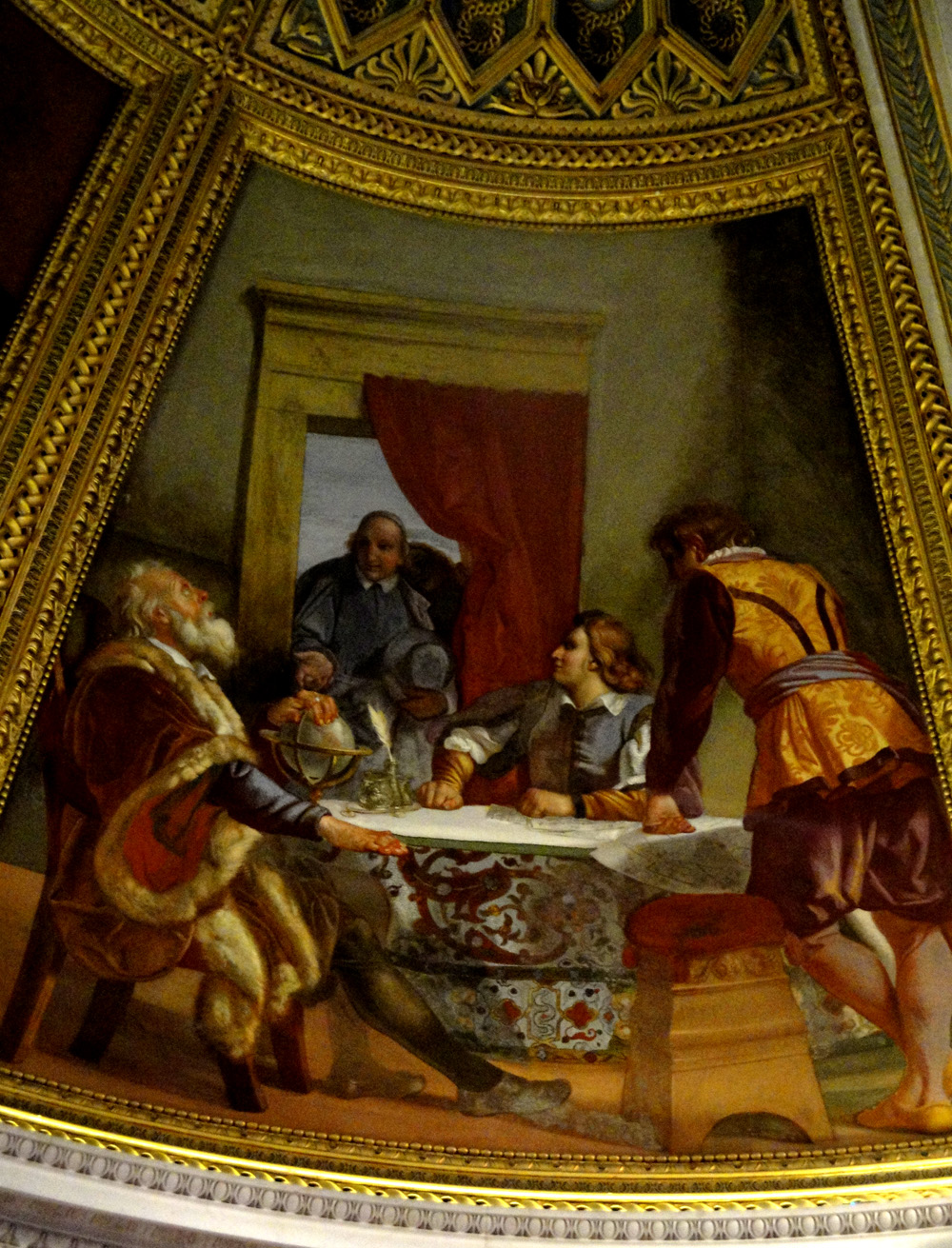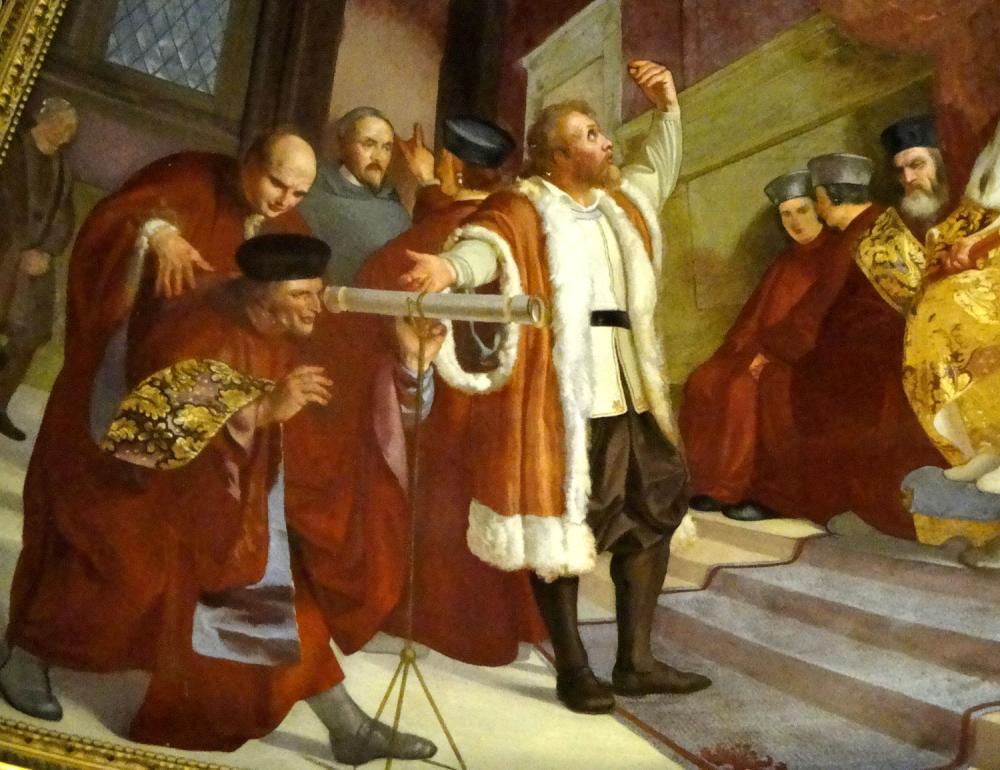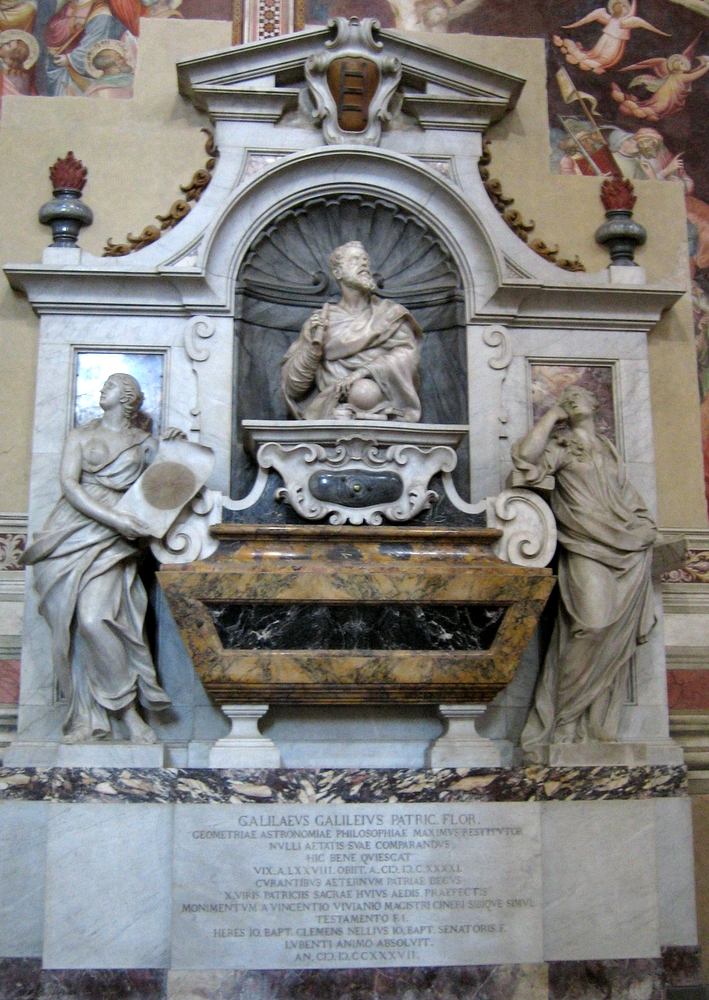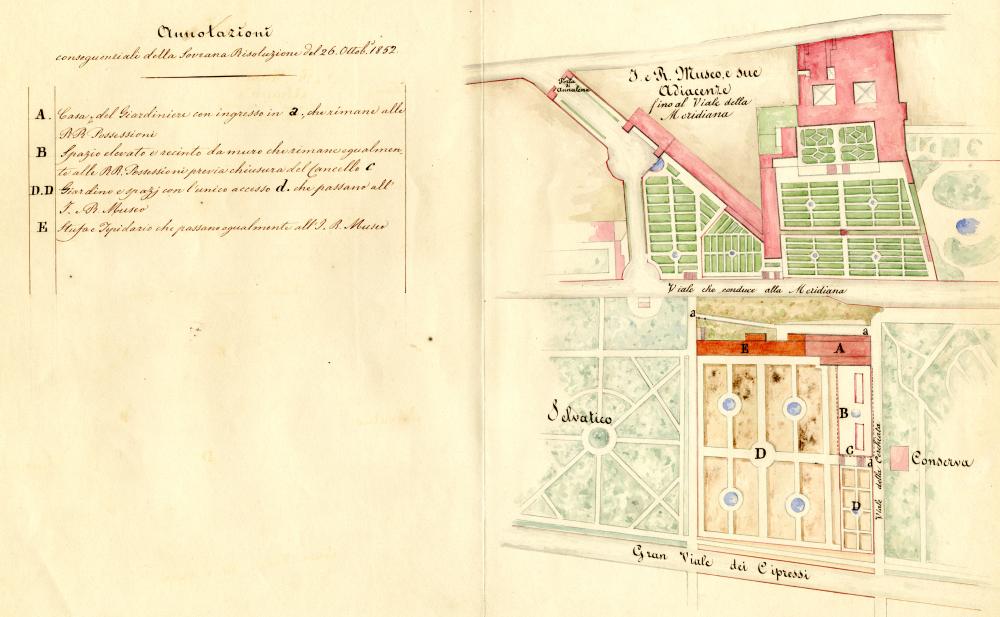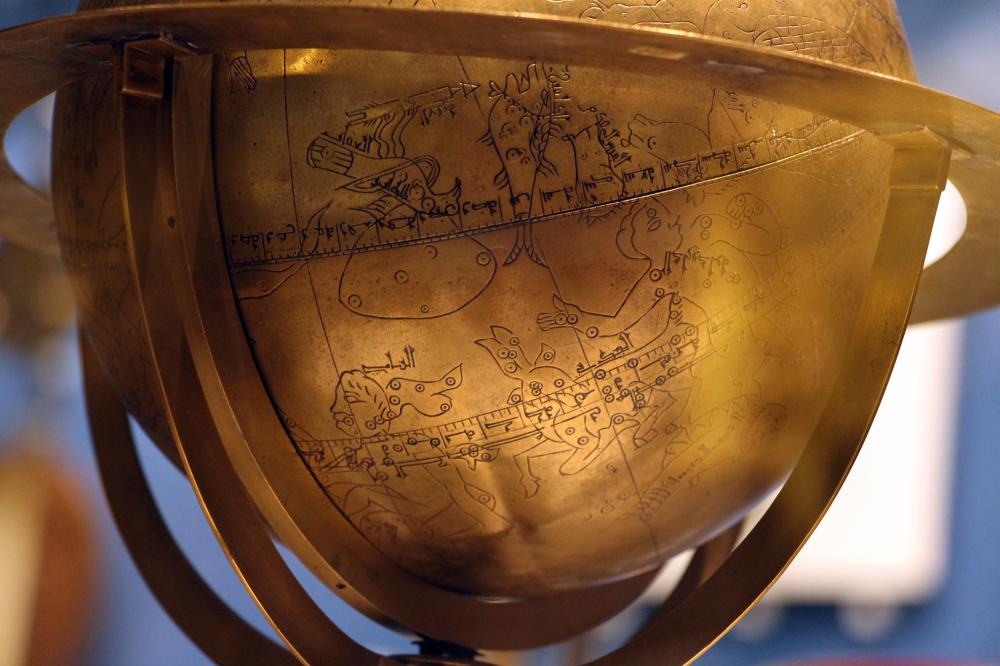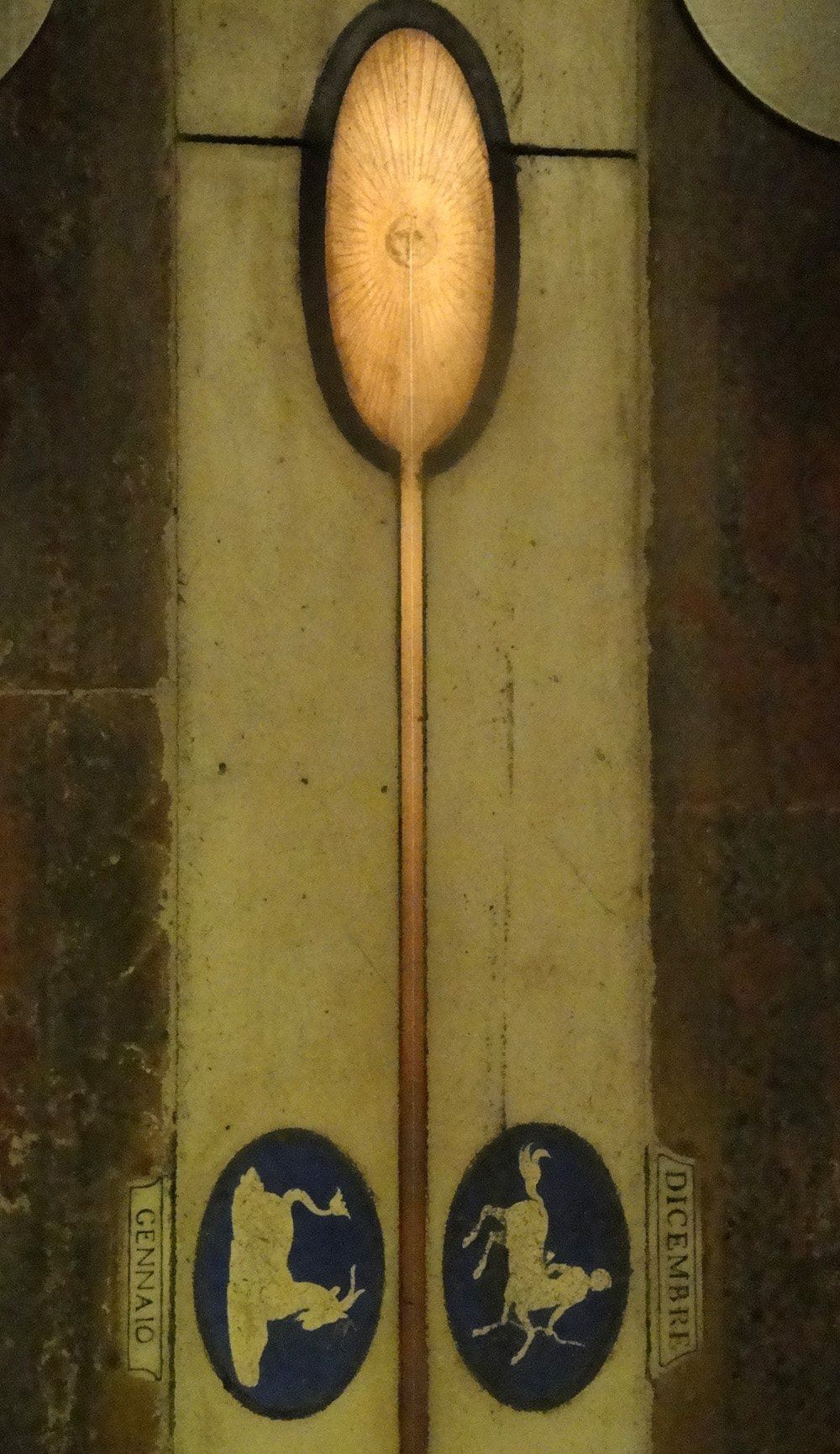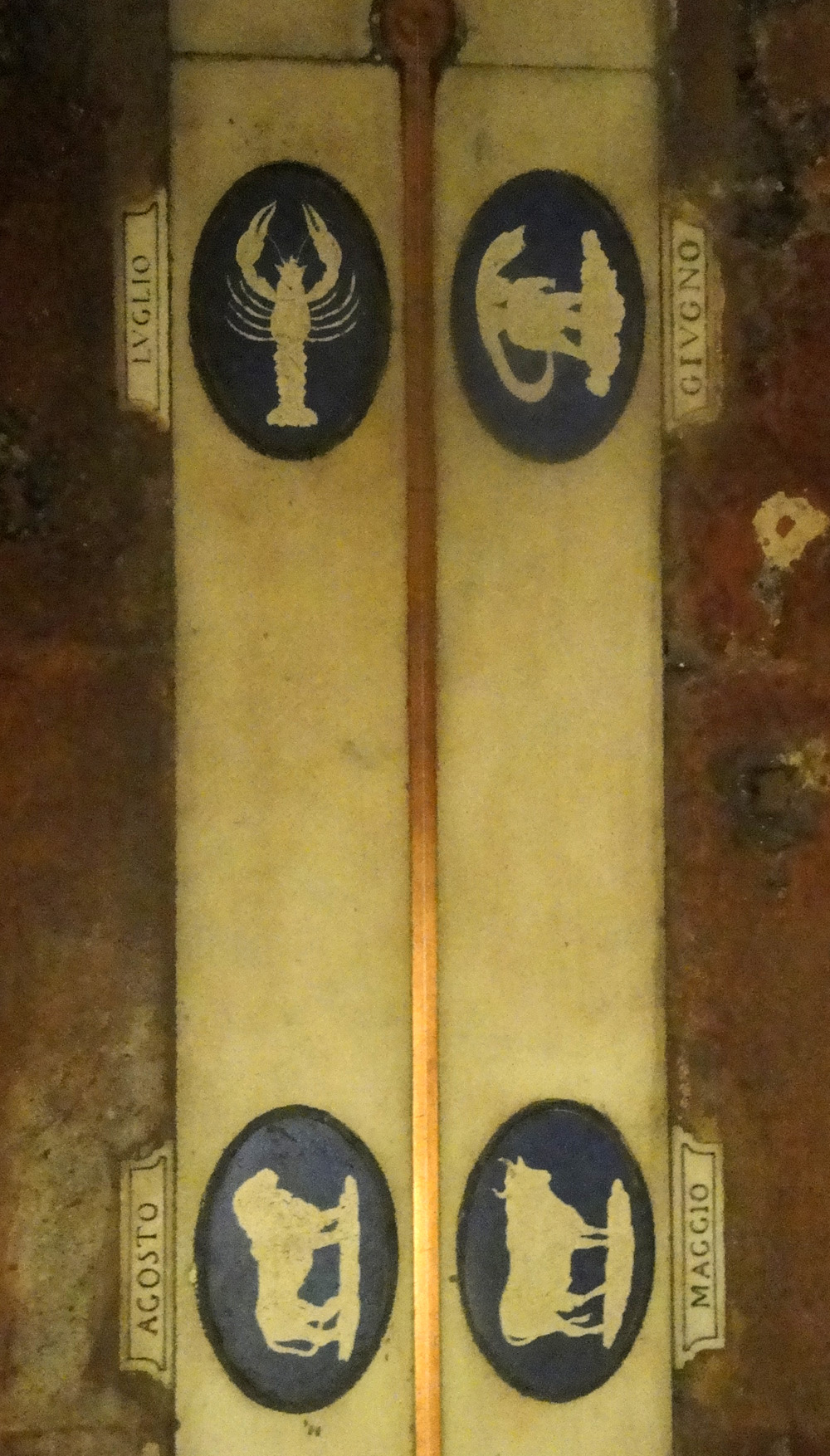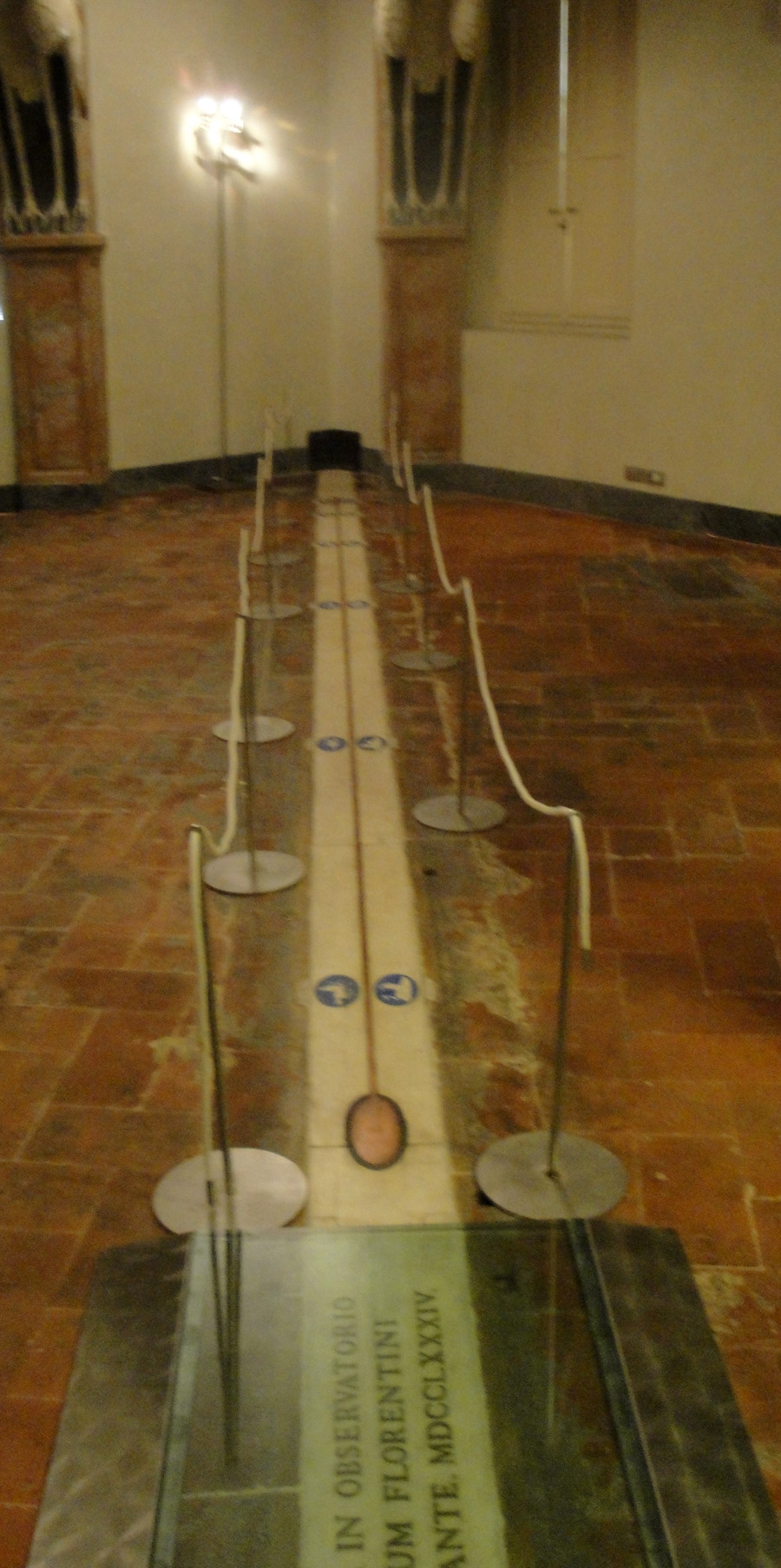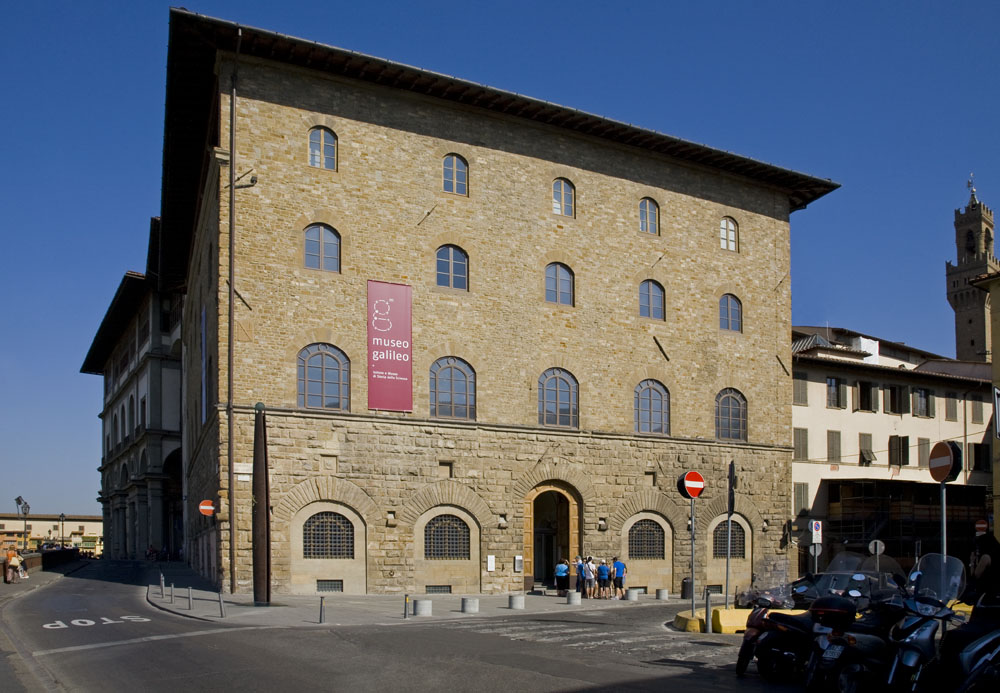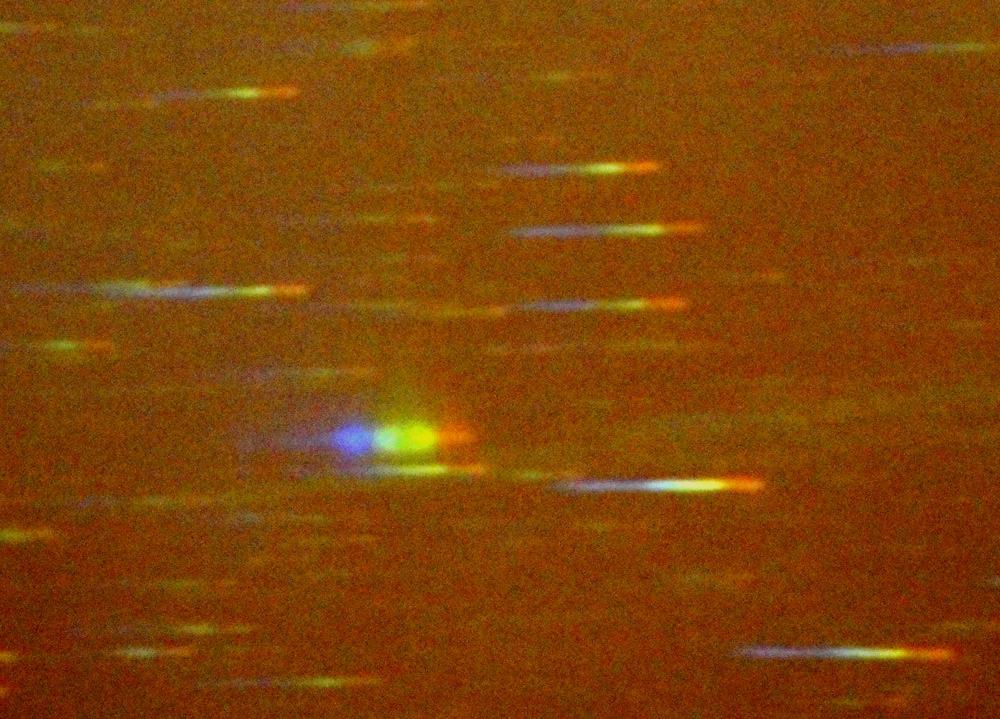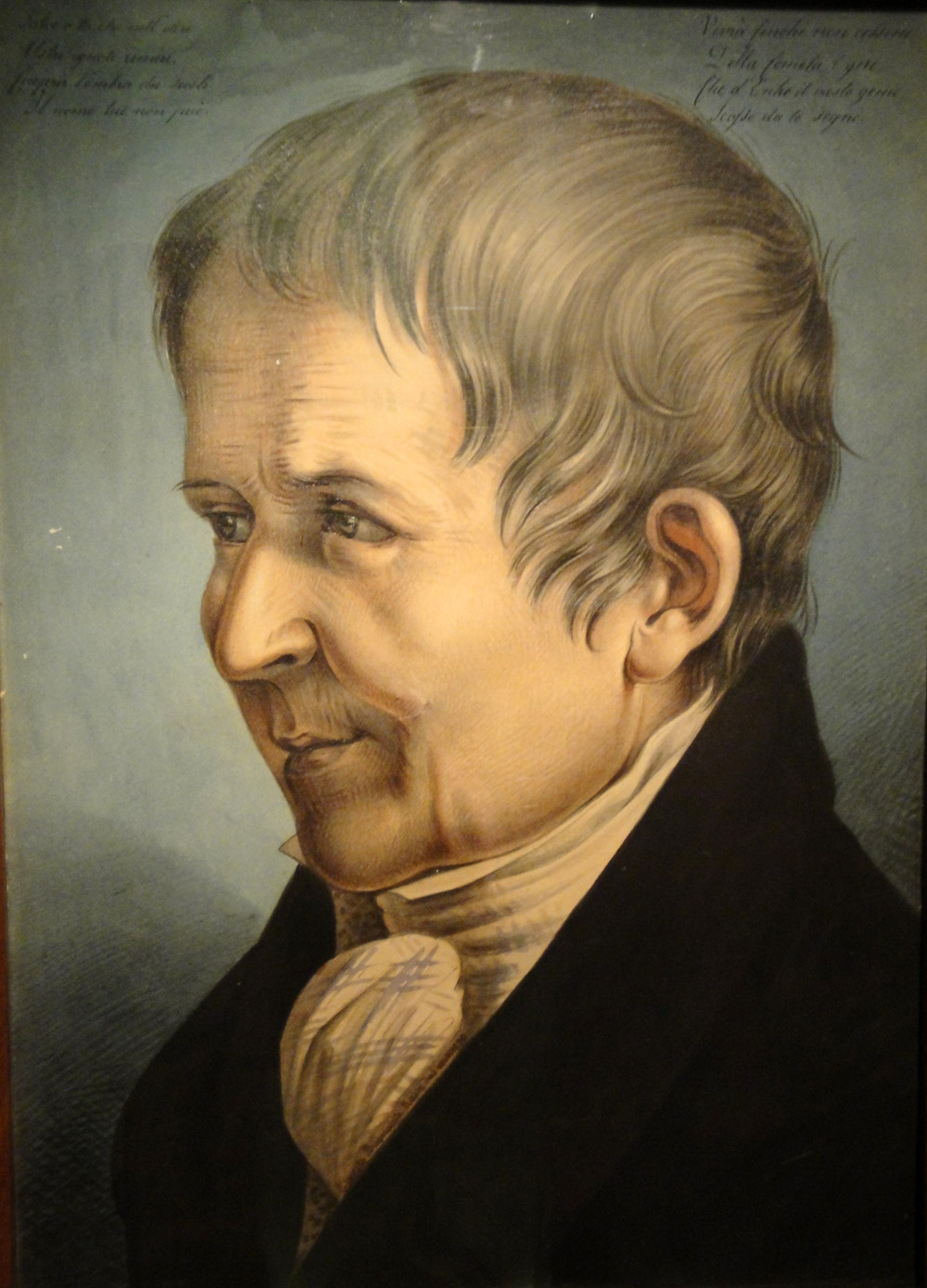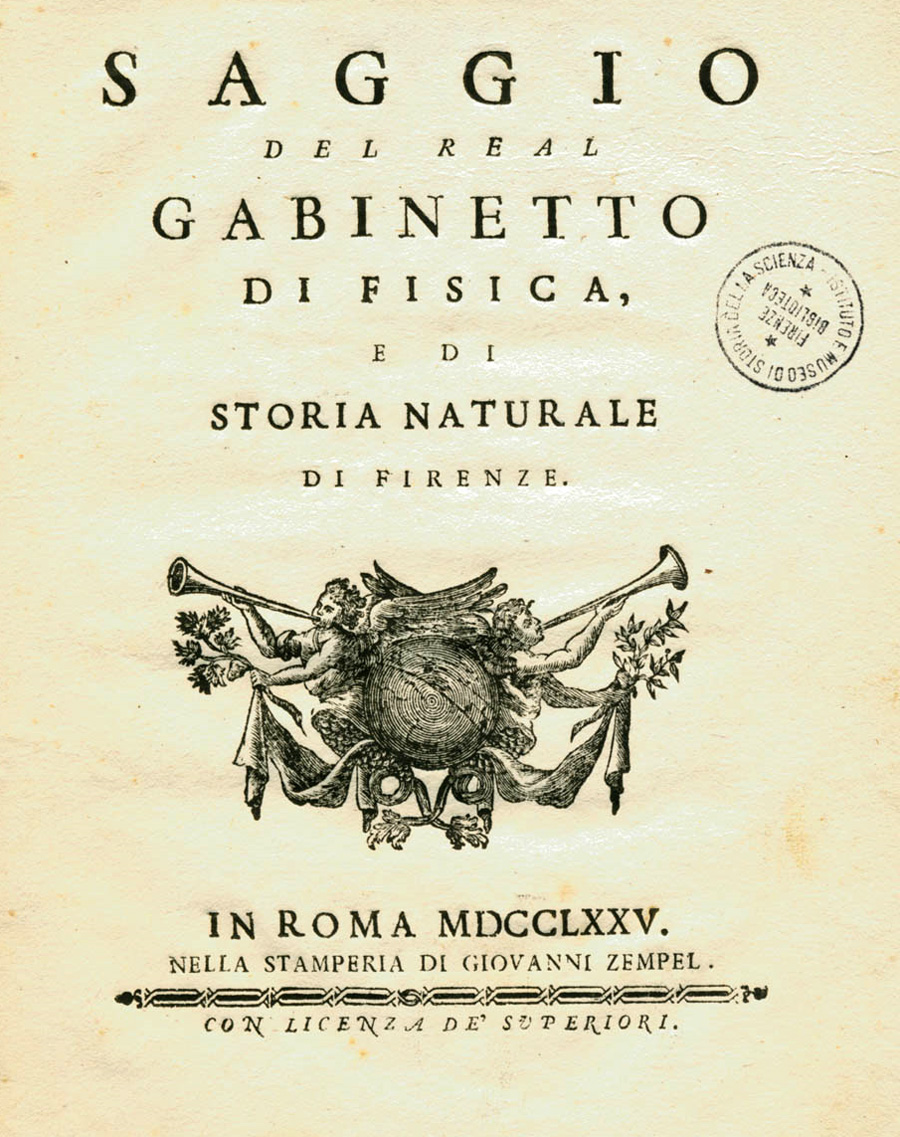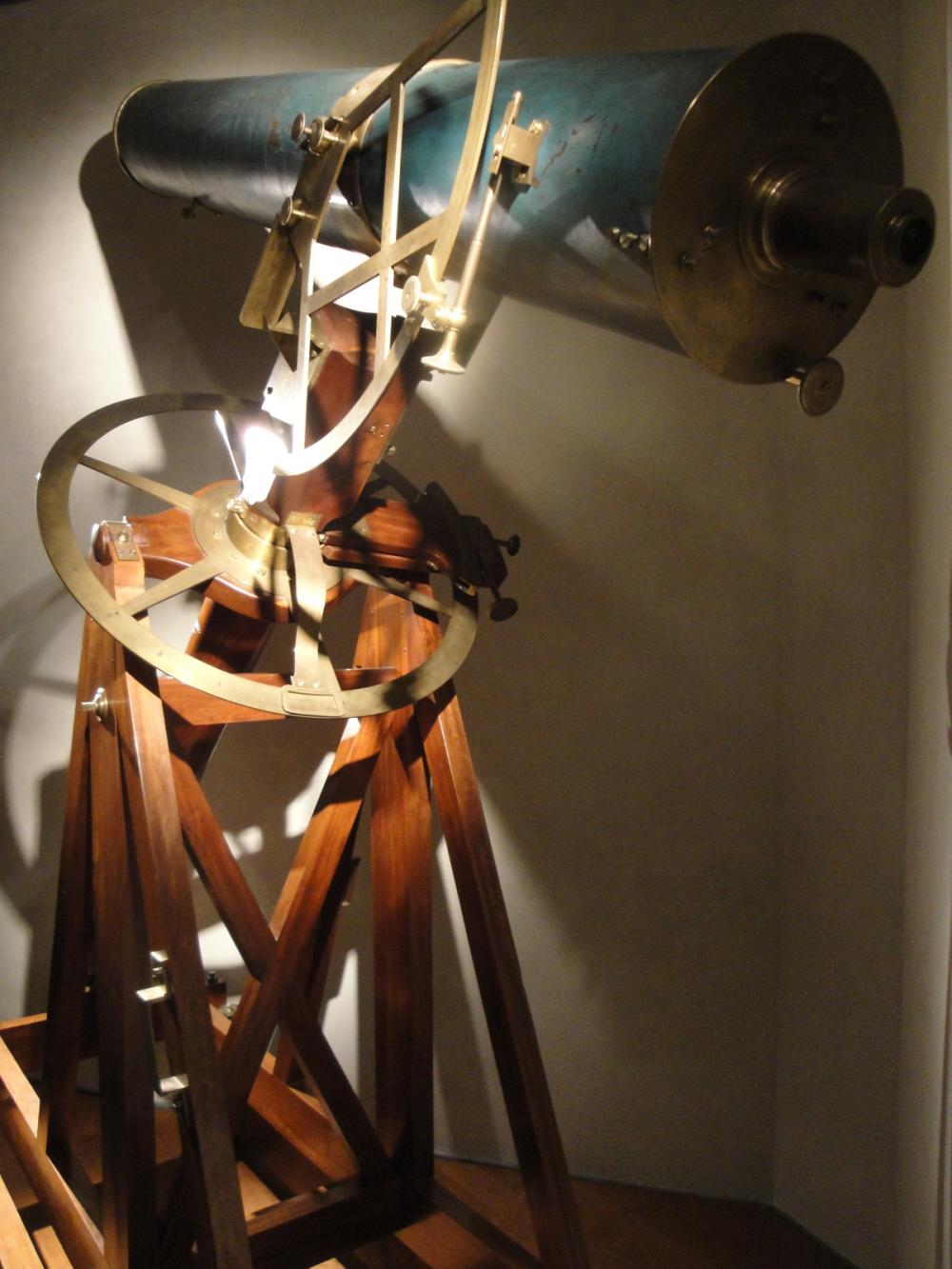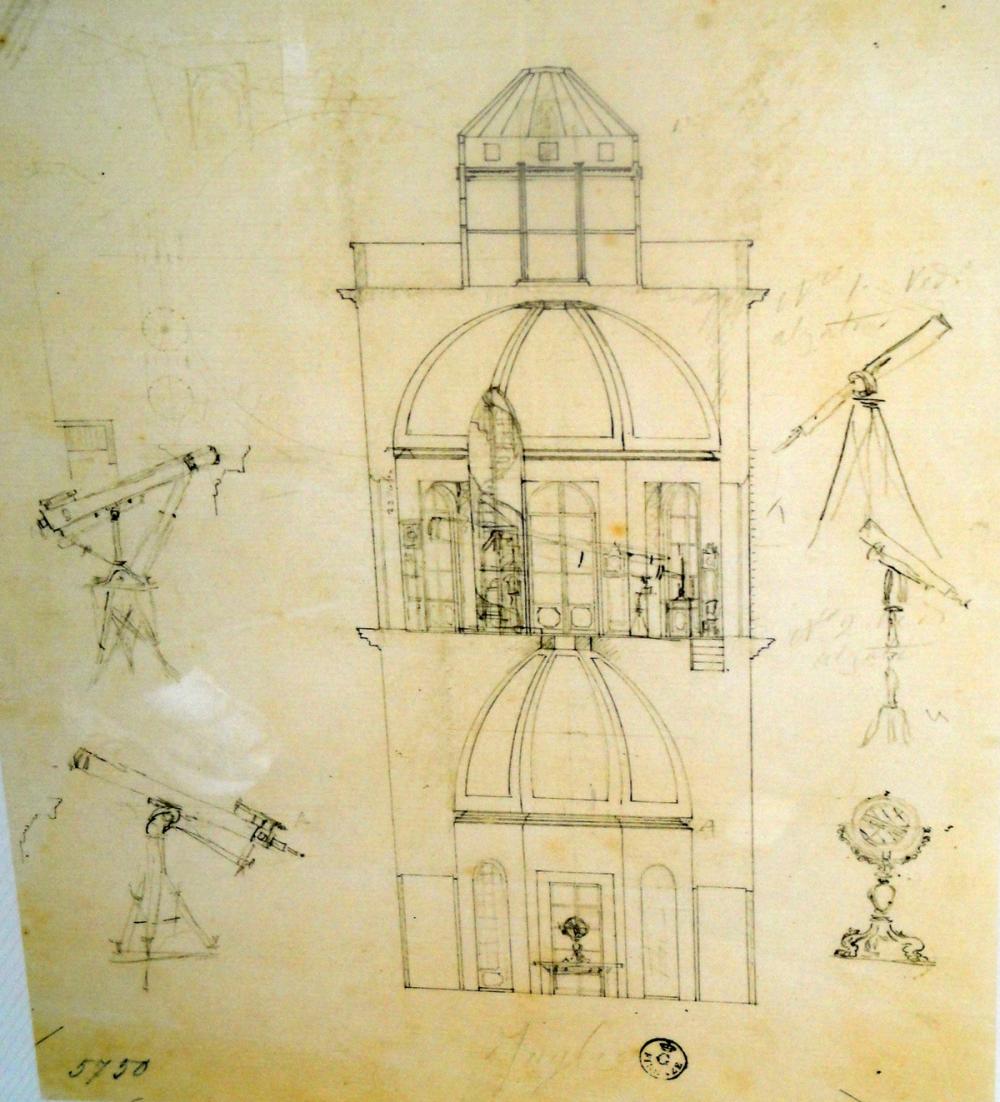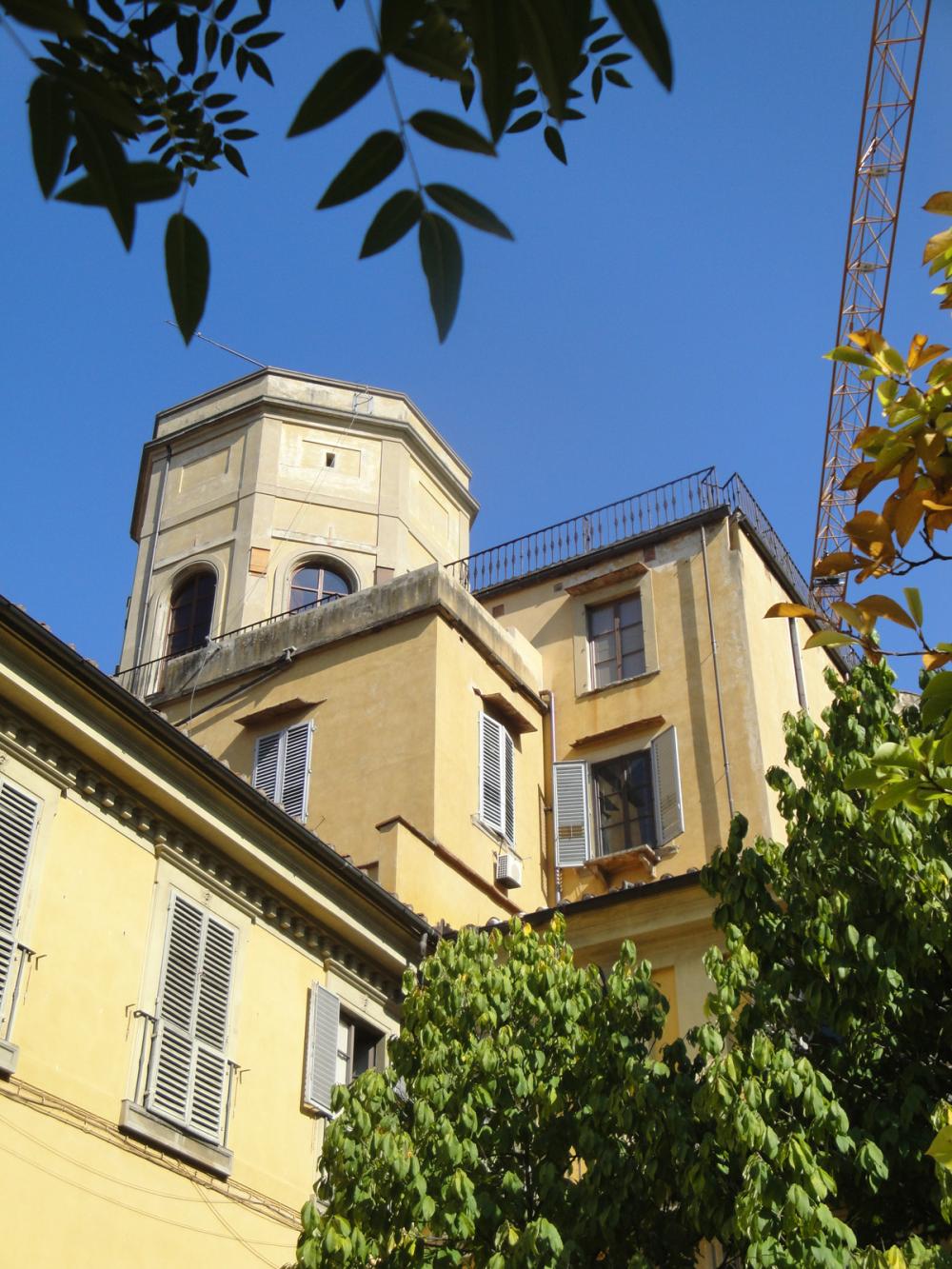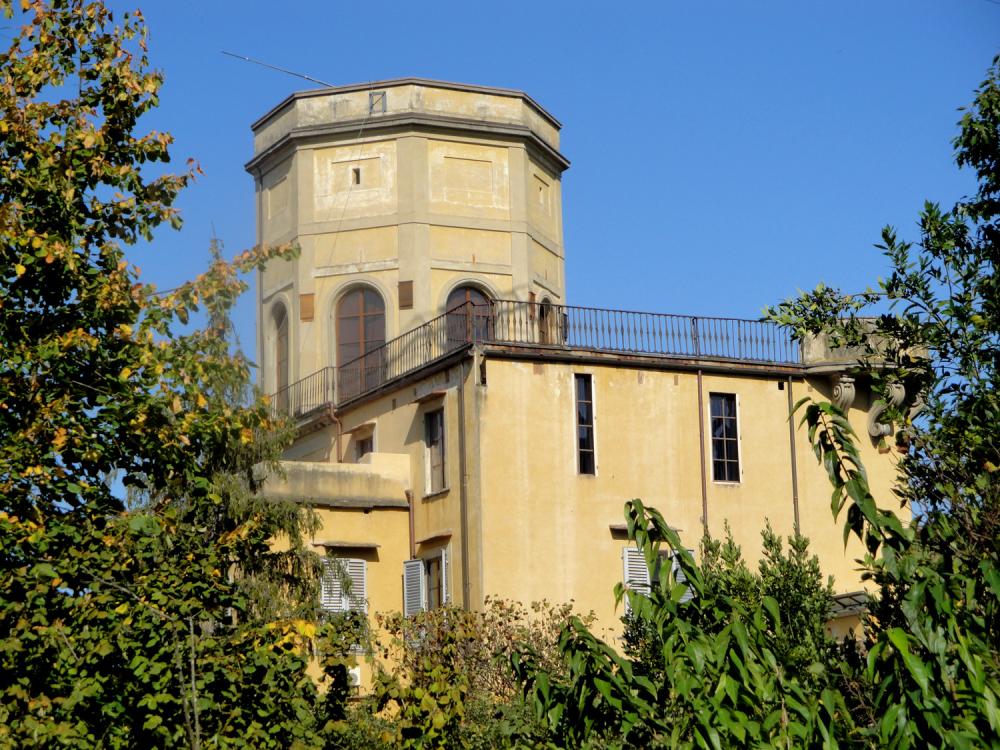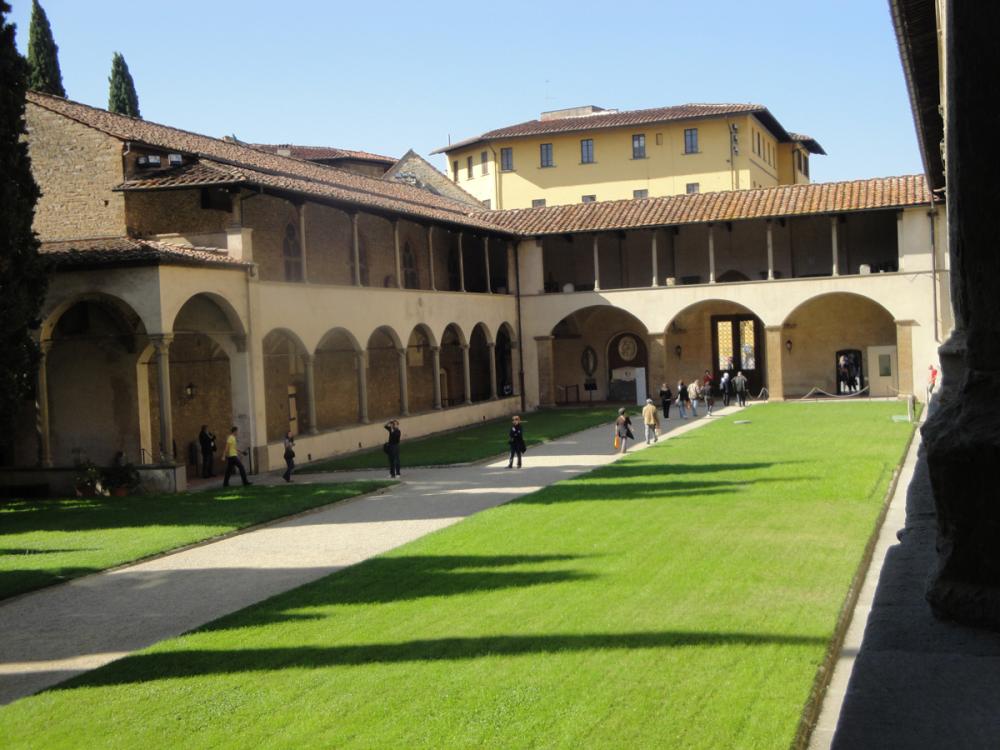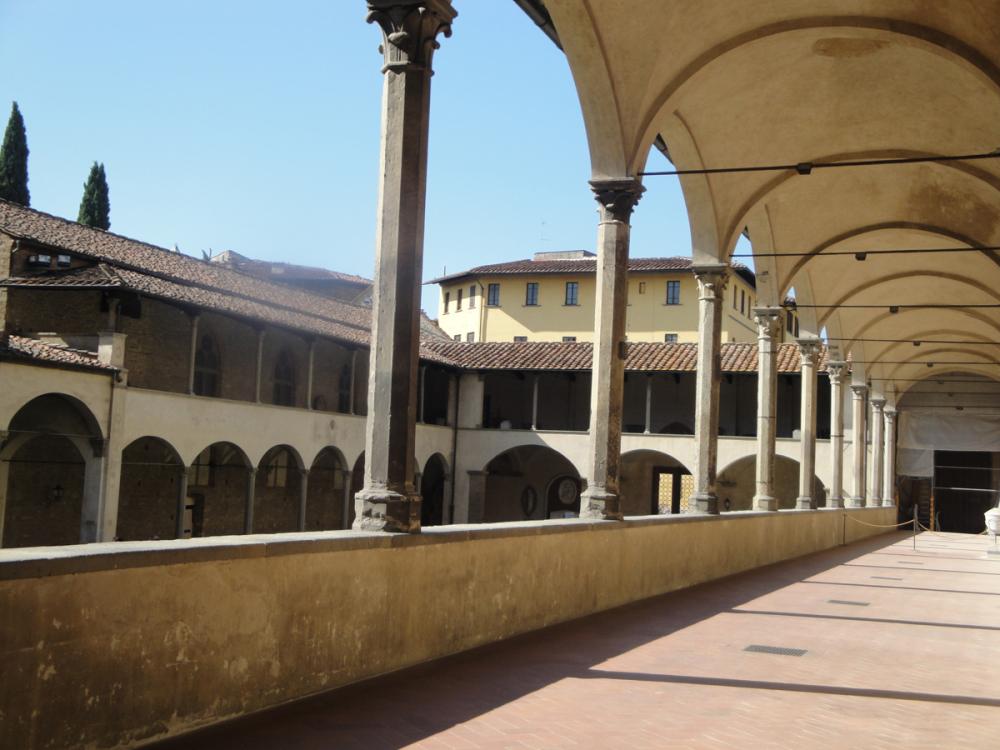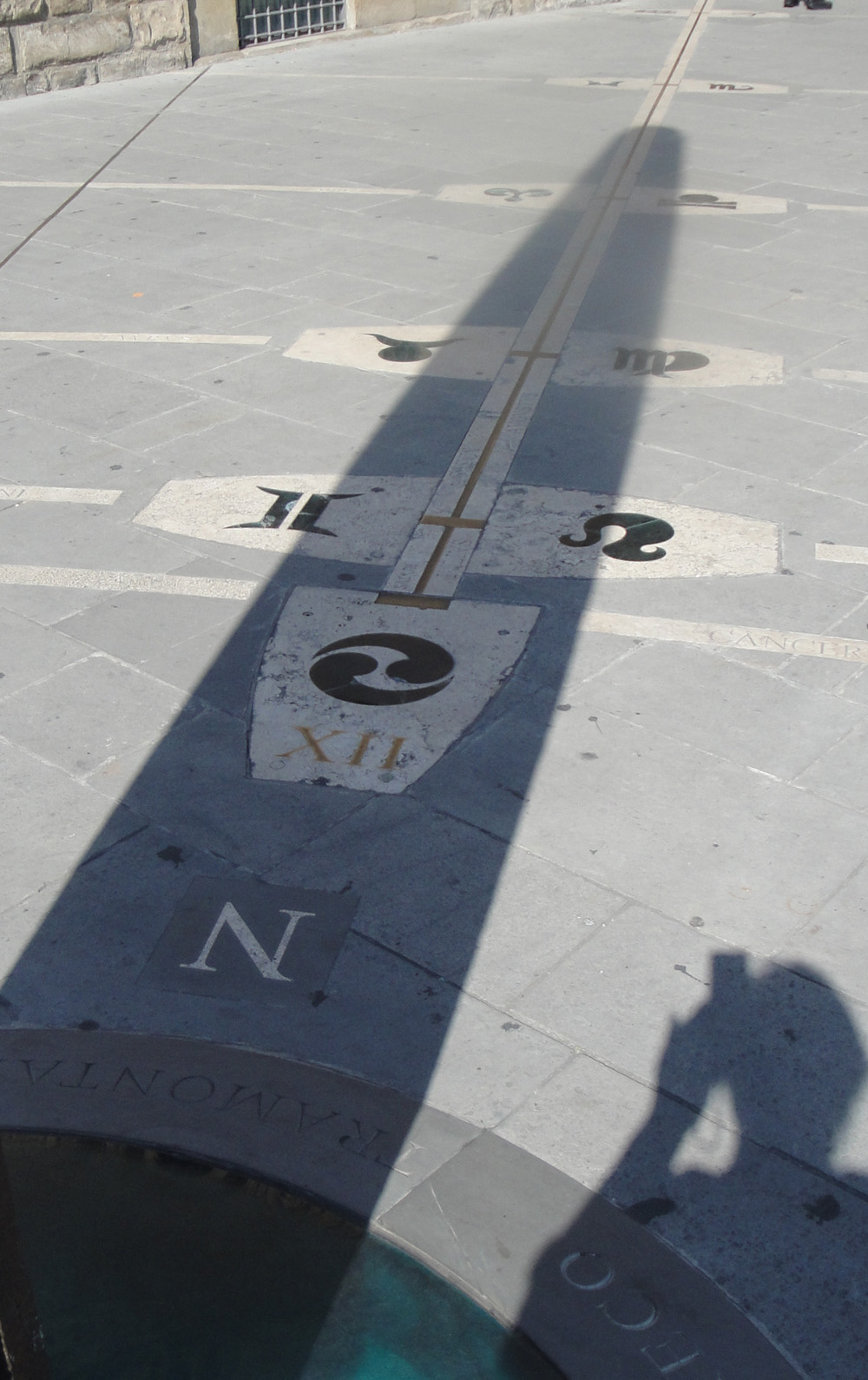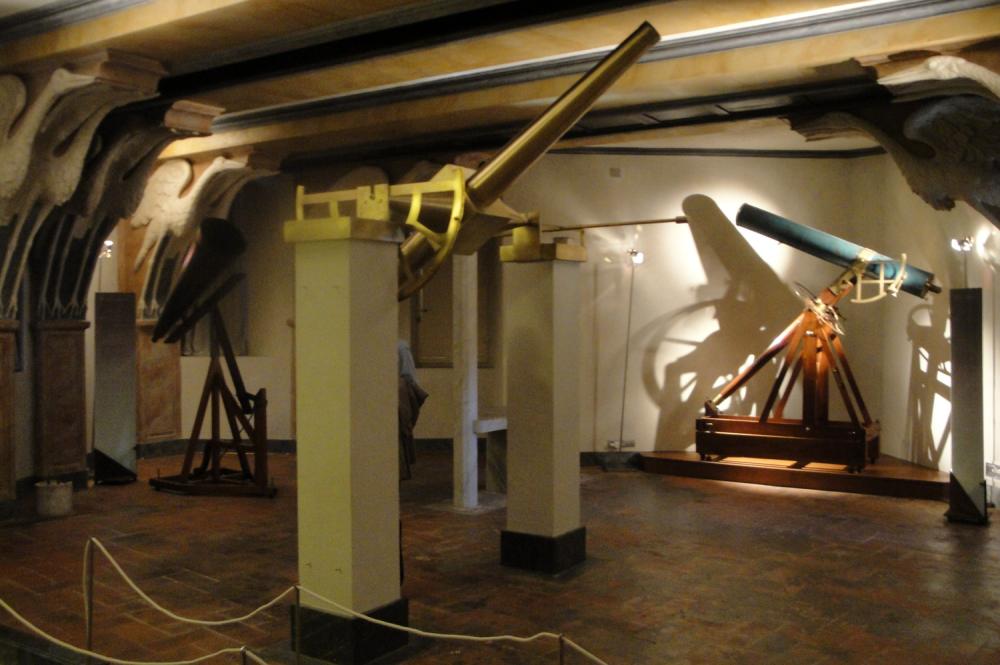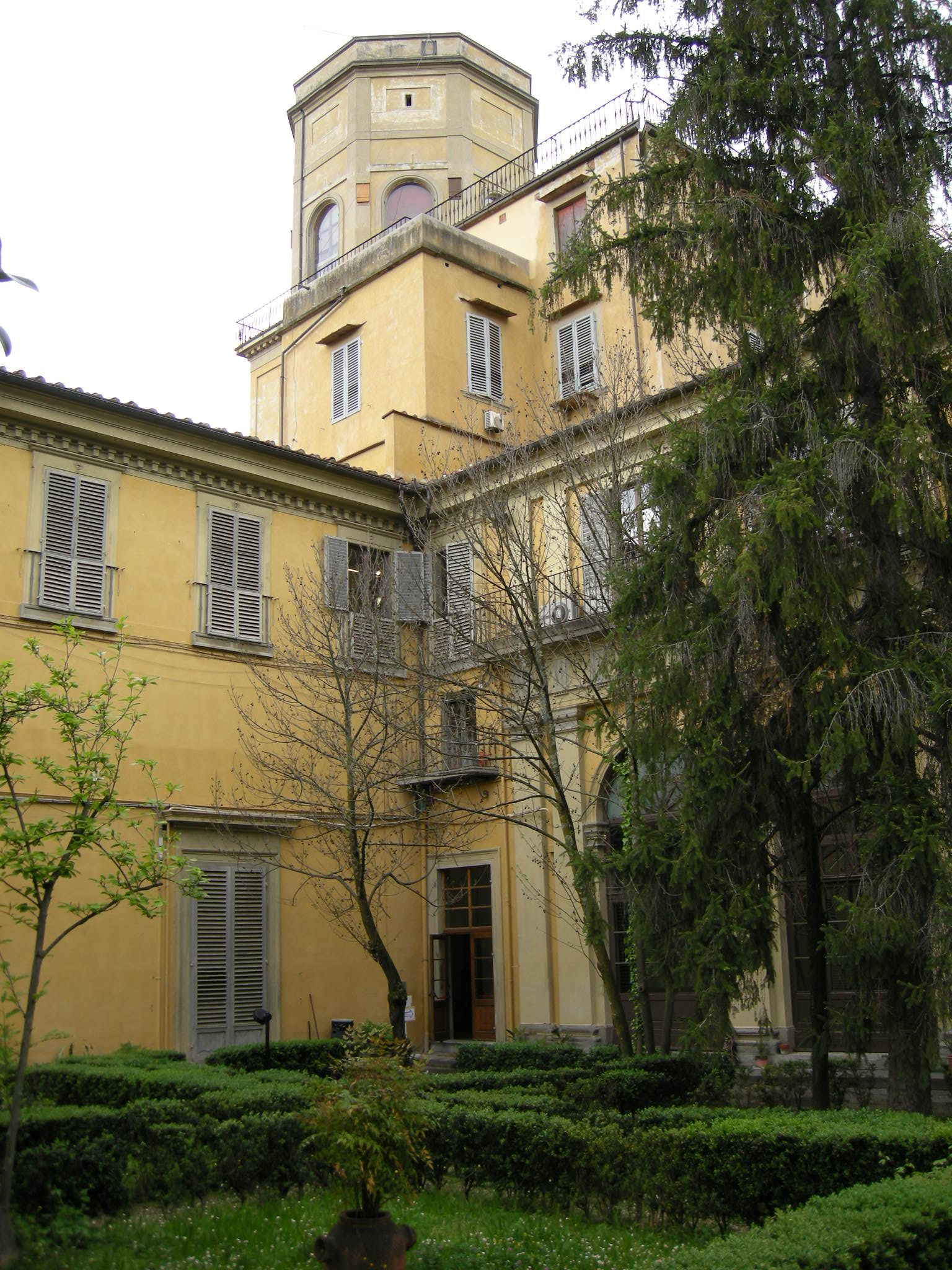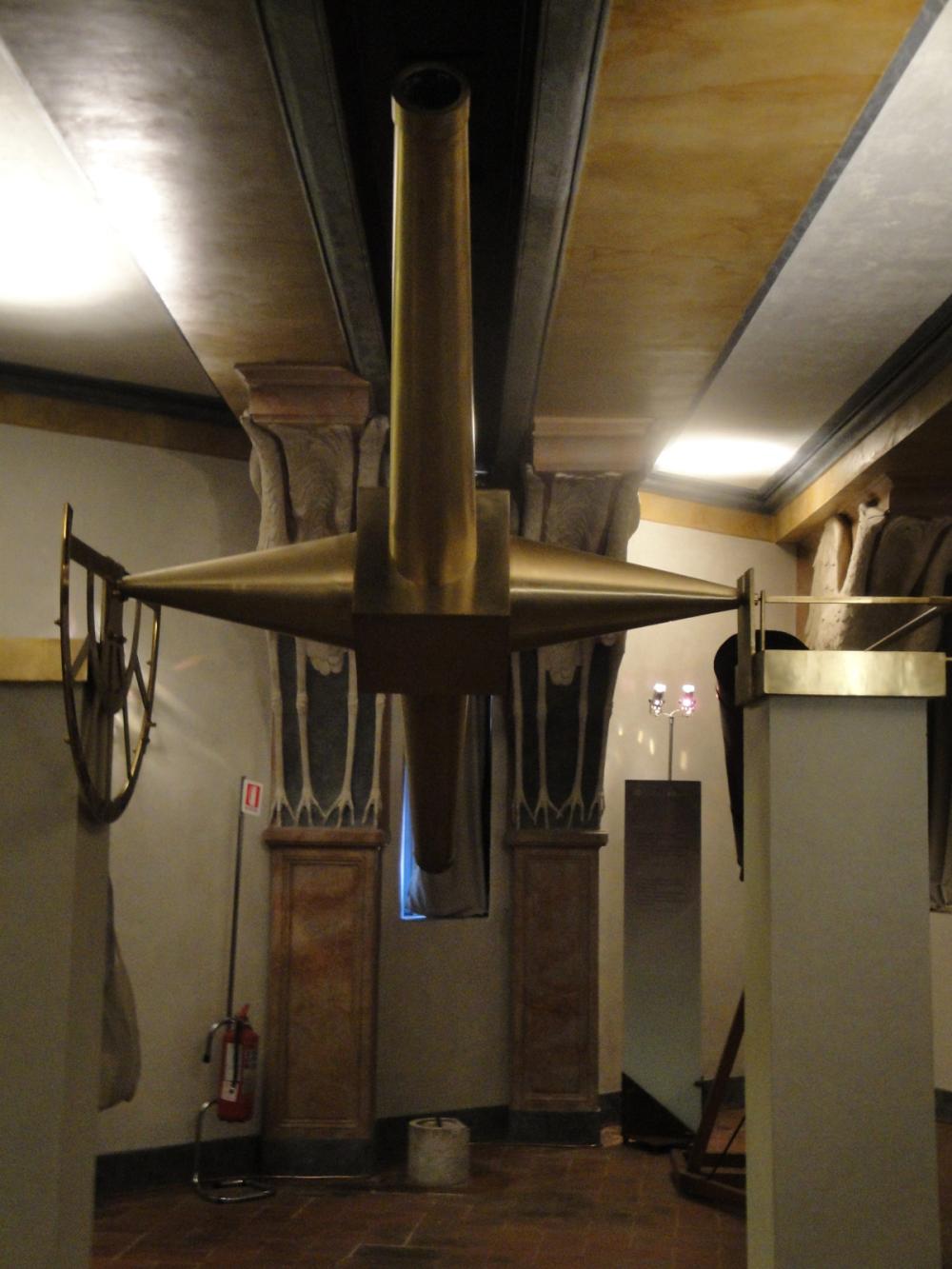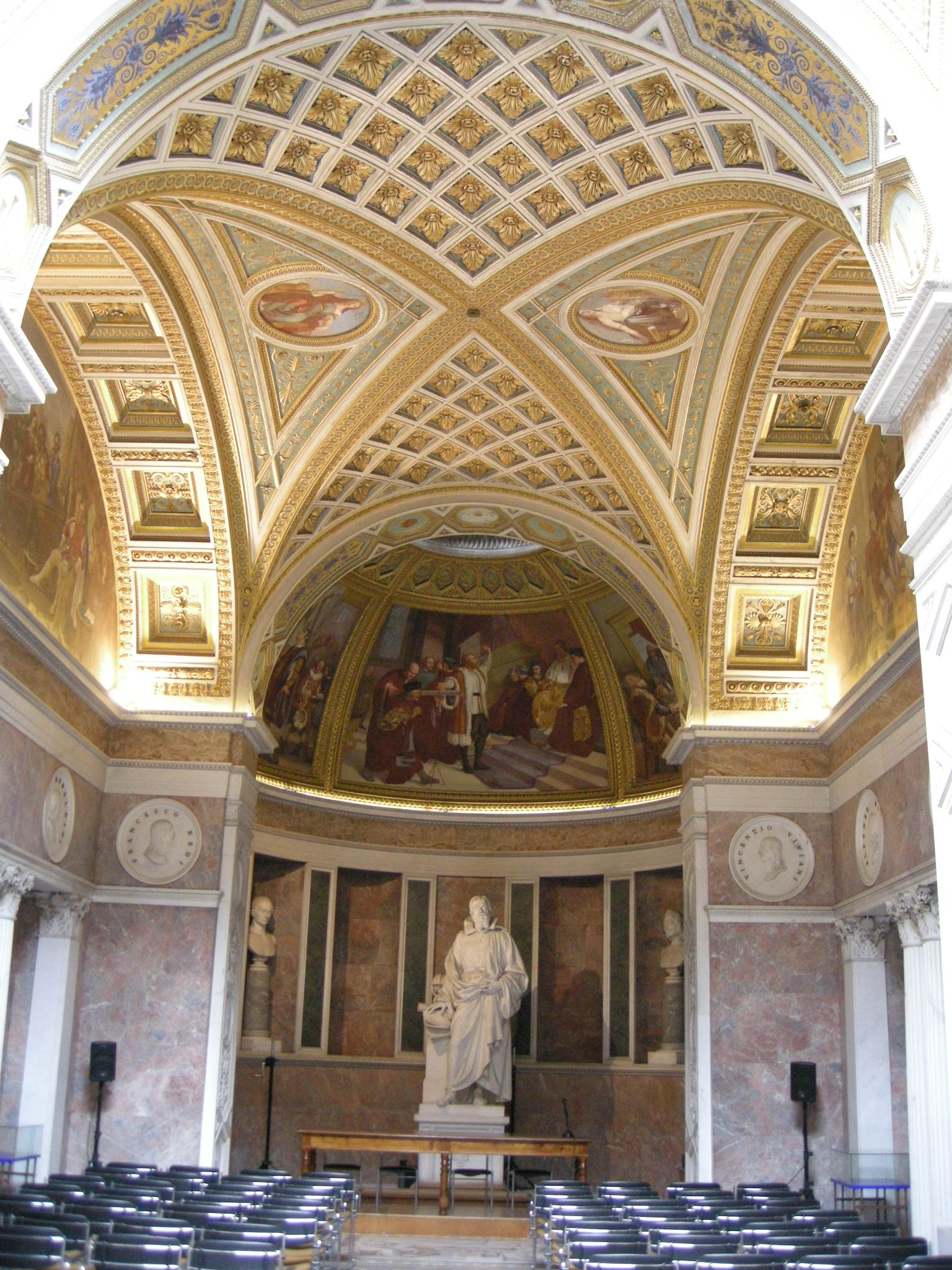
Category of Astronomical Heritage: tangible immovable
La Specola, Florence´s first Observatory, Firenze, Italy

Description
Geographical position
La Specola, Florence Florence’s first Observatory, Palazzo Torrigiani, Via Romana 16, Firenze (Florence, Florenz), Italy
See also: Arcetri Astrophysical Observatory, INAF (1872), Osservatorio Astrofisico di Arcetri, Largo Enrico Fermi 5, Firenze, Italia
Location
Latitude 43°45’51.71’’ N, Longitude 11°14’50.82’’ E, Elevation 72.6m above mean sea level.
IAU observatory code
-
Description of (scientific/cultural/natural) heritage

Fig. 1. La Specola, Florence (1780), (INAF)
La Specola in the city center of Florence, Capital of the Grand Duchy of Tuscany, was an astronomical observatory, founded in 1780 by Grand Duke Pietro Leopoldo di Toscana (1747--1792). It is an octagonal tower with eight large windows for observing, constructed on the top of Palazzo Torrigiani, and finished in 1789. The tower was designed by Niccol├▓ Maria Gaspero Paoletti (1727--1813), architect and professor at the Accademia di Belle Arti di Firenze, in neoclassical style. Its construction involved reinforcement of the existing building, with redimensioning of the perimeter foundation of the palace’s lower floors. A highlight is the Meridian Room, which has supporting arches, stuccoed with slender storks.
The observatory is surrounded by a rectangular garden (Real Giardino di Boboli) located on top of a bastion on the city walls. In his report, Tommaso Perelli (1704--1783), professor of astronomy in Pisa and director of the Observatory from 1739 (quoted from Bianchi 2020, 29), had suggested to use a higher site. But as a result, the sky view from the new Specola was limited: "its horizon [is] dominated, with the exception of one side, by buildings and nearby hills" (Vecchi 1808: 7), and with "The Fort Belvedere, the decoration and the trees of the Boboli Gardens hide a considerable, if not at least an important, portion of this [eastern] part of the sky" (Vecchi 1810: 29).
La Specola was the most important astronomical observatory in Tuscany, and belonged to the famous observatories in the 18th century, mainly equipped with English astronomical instruments, but also locally produced instruments.
In 1807, the first director of the Observatory was finally appointed, Domenico de Vecchi (1768--1852), professor of astronomy of the Lyceum. His dream, typical for the time of Enlightenment, was to realize a museum in which all that was known of nature could be presented in one building in order to educate the people, and in addition for scientists to make remarkable discoveries. This is reflected in the exhibition in the tower which "reproduces the spirit of unity of scientific knowledge, pursued by assembling collections dealing with all the disciplines and organizing them in displays proceeding from Earth to Sky" -- compare with Kremsmünster Observatory, Austria (1749).
Fontana wanted to compete with the impressive Florence’s fine-art collections in the field of natural history and exact sciences, including astronomy, physics, chemistry, and mathematics.
There was also a room, used as Camera obscura with black walls and a floor made of large slate slabs. It was used for optical experiments, but it can also be used to observe the Sun (like in the Baroque Erlau (Eger) Observatory in Hungary, Eszterhazy Károly College (Lyceum), also with an octagonal astronomical tower (1770) of 53m height, Eszterházy tér 1; a meridian line was added in 1776).
With its original appearance restored and set up as a projection room, it houses a small sample of objects forming part of the Medici collection of carved stones, splebdid examples of Renaissance glyptic art.
Then, famous astronomers were appointed: in 1825, Jean-Louis Pons (1761--1831), in 1831, Giovanni Battista Amici (1786--1863). During the directorship of Giovanni Battista Donati (1826--1873), appointed in 1859, the Observatory was transferred to a better location for astronomical observations, the hill of Arcetri (1872).
History of La Specola:
Museo Galileo (formerly Istituto e Museo di Storia della Scienza, IMSS, *1930), Castello d’Altafronte (11th-century), now Palazzo Castellani, Piazza dei Giudici 1, Florence, has reopened in 2010 -- four hundred years after the publication of Galileo’s Sidereus Nuncius (1610).
Museum directors: 1930 to 1961 Andrea Corsini, 1961 to 1981 Maria Luisa Righini Bonelli, 1982 to 2021 Paolo Galluzzi.
History of the Museo Galileo:
- It contains in the first floor nine rooms, devoted to the Medici Collections, started by Cosimo I (1519--1574) in Palazzo Vecchio, dating from the 15th century through the 18th century, including Galileo’s unique artifacts.
In 1600, Ferdinando I (1549--1609) transferred the collections to the Uffizi Gallery (Mathematics Room), especially the large armillary sphere, built by Antonio Santucci (ÔÇá1613) in 1593.
In 1657, the collections were moved to the Accademia del Cimento in the Pitti Palace (1667), inaugurated by Ferdinand II (1610--1670) and Leopold de’ Medici (1617--1675). - In 1775, the instruments were moved from the Pitti Palace to the Royal Museum of Physics and Natural History in Palazzo Torrigiani, where the Specola Museum is located today.
The nine rooms on the second floor house instruments and experimental apparatus collected by the Lorraine dynasty (18th--19th century) with remakable instruments of electricity, electromagnetism and chemistry.
The Real Museo di Fisica e d’Istoria Naturale dalla parte del Real Giardino di Boboli was founded by granduca Pietro Leopoldo di Toscana (1747--1792) / Leopoldo II d’Asburgo-Lorena / of Habsburg-Lorraine (*1775).
In order to expand the museum, put together by the Medici family, and increased by Grand Duke of Tuscany Pietro Leopoldo, to include meteorological and astronomical instruments, Pietro Leopoldo initiated the construction of an Osservatorio Astronomico, La Specola, in 1780, with Abbot Felice Fontana (1730--1805) as director. The collection was enlarged with new instruments of mathematics, physics, electricity, meteorology and astronomy.
Directors from 1775 to 1878:
- Felice Fontana (1730--1805)
- Giovanni Fabbroni (1752--1822),
from 1829 to 1859 Vincenzo Antinori (1792--1865), who had as teachers for astronomy Giovanni Battista Amici (1786--1863), and Leopoldo Nobili (1784--1835) for physics (electromagnetic induction). - Cosimo Ridolfi (1794--1865)
- Carlo Matteucci (1811--1868)
- Filippo Parlatore (1816--1877).
The Real Museo di Fisica e d’Istoria Naturale, Palazzo Torrigiani, Via Romana 16, was closed in 1878. Then the collections were split up in various Florentine museums.
Under Ferdinand III. (1769--1824), the museum lost its status as an important place of European knowledge. The University of Florence emerged in 1923 from the founding of the Istituto di Studi Superiori e di Perfezionamento (Institute for Higher Studies and Continuing Education) in 1859 (the first university, the Studium Generale, was already established by the Florentine Republic in 1321).
La Specola is now one of six departments of the Museo di Storia Naturale with its building in Via Romana, near Pitti Palace, now the Institute for Physics and Natural Sciences, belonging to the collections of the University of Florence (Universit├á degli Studi di Firenze, UniFi). Museum of Zoology and Natural History, and has the official name Museo di Storia Naturale dell’Universit├á di Firenze, section of the Zoologia La Specola, including famous anatomical wax models.
Research: MuSA 2009 -- Museo della Strumentaria Astronomica -- A project for the preservation of the historical instruments kept in the Observatories.
History
Instruments, acquirired by Fontana and Fabbroni, 1775 to 1780 (Vecchi 1810; Miniati 1984)
- Transit instrument (10-cm-aperture = 4’’), made by Jeremiah Sisson (1720--1783) of London
- Zenith sector (10-cm-aperture = 4’’), made by Jeremiah Sisson (1720--1783) of London
- Achromatic telescope (8-cm-aperture = 3’’), made by Peter Dollond (1731--1820) of London
- Reflecting telescope, made by James Short of London (2nd half of 18th century)
- Reflecting telescope (15-cm-aperture = 6’’), made by William Herschel (1738--1822)
- Pendulum clock, made by Larcum Kendall (1719--1790)
- Conical telescope tube for stellar spectroscopy, designed by Giovanni Battista Donati (1826--1873) --
with this instrument Donati started the first astrophysical research in Italy, and was among the first in the world. - Objective prism
- Inspired by Ramsden circle of the Palermo Observatory,
an astronomical circle of 3.6-m (12-feet) diameter, a giant instrument was planned,
but Jesse Ramsden (1735--1800) of London never made it (McConnel 2007). - Refractor with a 11-cm (4’’) Fraunhofer doublet
- Repeating circle by Reichenbach (Funaro 2001; Inghirami 1819).
Directors of the Florence Observatory, La Specola
- 1807 to .... -- Domenico de Vecchi (1768--1852)
- 1825 to .... -- Jean-Louis Pons (1761--1831), a famous comet hunter of Marseille Observatory, he found seven comets in Florence
- 1831 to .... -- Giovanni Battista Amici (1786--1863)
- 1859 to .... -- Giovanni Battista Donati (1826--1873).
State of preservation
According to Abbott (2009), Florence’s Observatory (1780) was newly restored. In addition, the heritage of the instruments, library, and archive material is regarded as valuable scientific heritage.
"The <i>INAF Osservatorio Astrofisico di Arcetri</i> has the duty to preserve and valorise a historical heritage consisting of archival documentation, instruments and ancient volumes.
The conservation and reconstruction of the past are recent phenomena at the Arcetri Observatory: towards the end of the 1950s various instruments no longer in use, a part of the ancient book collection, and some documentary funds were transferred to the Institute and Museum of the History of Science. It was only at the end of the 1990s that full awareness of the importance of the history of the Observatory finally emerged, and projects aimed at the protection and valorisation of its cultural heritage were established. Through a complex and articulated path of retrievals and acquisitions, it was possible to recompose the historical archive, while a careful study of past inventories made it possible to reconstruct the instrument collection that is currently on display partly in the Galileo Museum and partly in the Observatory. Among the ancient volumes owned by the Observatory, stands out a copy of the 1632 edition of Galileo Galilei’s Dialogue Concerning the Two Chief World Systems, with autographed notes by Antonio Favaro, the editor of the National Edition of Galileo’s works. This copy likely showed in its frontispiece the signature of Galileo himself." (https://www.arcetri.inaf.it/en/articles/history/historical-heritage).
Comparison with related/similar sites
La Specola may be compared with Kremsmünster Observatory, Austria (1749), which also intended to present a universal picture of the world by its extensive collections.
La Specola in Florence can be compared with the Baroque Tower Observatories, some also with octagonal shape like Oxford Observatory:
Akademie Sternwarte Marstall Berlin, Clementinum Prague (1722), Zwehrenturm in Kassel (1710), in Italy "Specola" Specola - Bologna Observatory (1712), Old Vienna Academy Observatory -- tower on the top (1755), Osservatorio Astronomico di Brera of the Jesuits in Milano (1762), Padova (Padua) Observatory (1767), Mannheim Observatory (1772).
Very large tower observatories are:
Kremsmünster, Austria (1749), Mathematical Tower of the University Breslau / Wrocław (1791), Bogotá Observatory, Columbia (1803).
Threats or potential threats
no threats
Present use
<i>La Specola</i> is now one of six departments of the <i>Museo di Storia Naturale</i> with its building in Via Romana, near Pitti Palace, now the Institute for Physics and Natural Sciences, belonging to the collections of the University of Florence (Universit├á degli Studi di Firenze, UniFi). Museum of Zoology and Natural History, and has the official name <i>Museo di Storia Naturale dell’Universit├á di Firenze</i>, section of the Zoologia La Specola, including famous anatomical wax models.
In the octagonal tower, there are the original astronomical instruments preserved.
Astronomical relevance today
<i>La Specola</i> in Florence is no longer used for astronomy.
The <i>Osservatorio Astrofisico di Arcetri</i> (OAA) was founded in 1872, and is one of sixteen research facilities that are part of the National Institute of Astrophysics (INAF).
References
Bibliography (books and published articles)
- Abbott, Alison: Florence’s observatory restored. In: Nature 461 (2009), Issue 7269.
- Barbagli, Fausto; Bianchi, Simone; Casalbuoni, Roberto; Dominici, Daniele; Mazzoni, Massimo & Giuseppe Pelosi: Astronomia e Fisica a Firenze dalla Specola ad Arcetri. Firenze: Firenze University Press 2017.
- Barsanti, Giulio & Guido Chelazz (ed.): Il Museo di storia naturale dell’Universit├á di Firenze, Vol. 1. Florence: Firenze University Press 2009.
- Bianchi, Simone: Gli strumenti di Giovan Battista Amici dalla vecchia Specola di Firenze al nuovo Osservatorio di Arcetri. In: Nuncius 25 (2010), 2, p. 357-382.
- Bianchi, Simone; Galli, D. & A. Gasperini: "The first Astronomical Observatory of Italy". The birth of the Arcetri Observatory (1861--1873). In: Il Colle Di Galileo 1 (2012), 1-2, p. 55-70.
- Bianchi, Simone; Galli, D. & A. Gasperini: Le due inaugurazioni dell’Osservatorio di Arcetri. In: Giornale di Astronomia 39(2013), 3, p. 19-30.
- Bianchi, Simone & D. Galli: 2014. Il riordino degli Osservatori astronomici all’indomani dell’unit├á d’Italia. In: Giornale di Astronomia 40 (2014), 4, p. 35-44.
- Bianchi, Simone & D. Galli: Les Observatoires astronomiques en Italie: an 1863 report by Otto Wilhelm Struve. In: Nuncius 30 (2015), 1, p. 195-227.
- Bianchi, Simone & D. Galli: The origins of Astrophysics in Florence. In: Chinnici, Ileana (ed.): Starlight -- The origins of Astrophysics in Italy. Napoli: Arte’m 2016, p. 14-33.
- Bianchi, Simone: The Founding of Arcetri Observatory in Florence. 2020, (
https://arxiv.org/pdf/2009.14666) - Bianchi, Simone: The ups and downs (and ups again!) of astrophysics in Italy after Secchi. In Chinnici, Ileana & G. Consolmagno (eds.): Angelo Secchi and Nineteenth Century Science. Cham, Switzerland: Springer 2021, Chapter 18.
- Camerota, Filippo (ed.): Museo Galileo: Masterpieces of Science. Firenze: Giunti 2010.
- Camerota, Filippo (ed.): Museo Galileo: Masterpieces of Science. Giunti 2010.
- Camerota, Filippo (ed.): Displaying Scientific Instruments: From the Medici Wardrobe to the Museo Galileo. Milano: Goppion 2012.
- Contardi, Simone: The origins of a scientific institution: Felice Fontana and the birth of the Real museo di fisica e storia naturale di Firenze. In: Nuncius 21 (2006), n. 2, p. 251-263.
- Godoli, Antonio; Palla, Francesco & Alberto Righini: La villa di Galileo in Arcetri / Galileo’s villa at Arcetri. Firenze: Firenze University Press 2016 (DOI:10.36253/978-88-6453-459-6).
- Gröger, Helmut: Die Sammlung anatomischer Wachspräparate der Medizinisch-chirurgischen Joosephsakademie. In: Schultmann, Rüdiger & Josef N. Neumann (Hg.): Anatomie und anatomische Sammlungen im 18. Jahrhundert. Berlin 2007, p. 317-330.
- Miniati, Mara: Origini della specola fiorentina. In: Giornale di Astronomia 10 (1984), 3-4, p. 209-220.
- Miniati, Mara: From the Museum of physics to the Museum of ancient instruments. In: Displaying scientific instruments: from the Medici wardrobe to the Museo Galileo. Annali del Laboratorio museotecnico 5 (2012), p. 37-43.
- Pigatto, Luisa: Gli Osservator├« Astronomici nell’Italia unita. In: Giornale di Astronomia 38 (2012), 1, p. 2-11.
- Poggesi, Marta: Die Wachsfigurensammlung des Museums La Specola in Florenz. In: Encyclopaedia Anatomica. Eine Auswahl anatomischen Wachses. Köln: Taschen 2001, p. 14-19.
- Poggesi, Marta: La Specola: dall’Imperial Regio Museo di fisica e storia naturale alla Sezione di zoologia del Museo di storia naturale dell’Universit├á di Firenze. In: Musei scientifici universitari: una grande risorsa culturale da valorizzare. In: Museologia scientifica, Memorie 7 (2011), p. 90-98.
- Schiff, U., 1928. Il Museo di storia naturale e la Facoltà di scienze fisiche e naturali di Firenze: note storiche sullo stato delle scienze in Firenze sotto i Lorena (part. 2). Archeion, 9, 290-324.
- Schiff, U., 1929. Il Museo di storia naturale e la Facoltà di scienze fisiche e naturali di Firenze: note storiche sullo stato delle scienze in Firenze sotto i Lorena (part. 4). Archeion, 10, 3-36.
- Struve, Friedrich Georg Wilhelm: Beschreibung des auf der Sternwarte der Kaiserlichen Universität zu Dorpat befindlichen grossen Refractors von Fraunhofer. Dorpat: Schünmann 1825.
- Struve, Friedrich Georg Wilhelm: Description de l’observatoire astronomique central de Poulkova. St. Petersbourg: Académie Impériale des Sciences 1845.
- Vecchi, Domenico de: Rapporto del professore d’astronomia. Annali del Museo Imperiale di Fisica e Storia naturale di Firenze 1 (1808), p. 1-13.
- Vecchi, Domenico de: Descrizione dell’Osservatorio Imperiale di Firenze. In: Annali del Museo Imperiale di Fisica e Storia naturale di Firenze 2 (1810), p. 5-113.
- Zanini, Valeria: I primi Osservatori Istituzionali Italiani. In: Chinnici, Ileana (ed.): Astrum 2009. Astronomia e Strumenti. Il patrimonio storico italiano quattrocento anni dopo Galileo. Città del Vaticano: Edizioni Musei Vaticani; Livorno: Sillabe 2009, p. 46-53.
Links to external sites
No multimedia content published
Currently there is no multimedia content published for this case study
